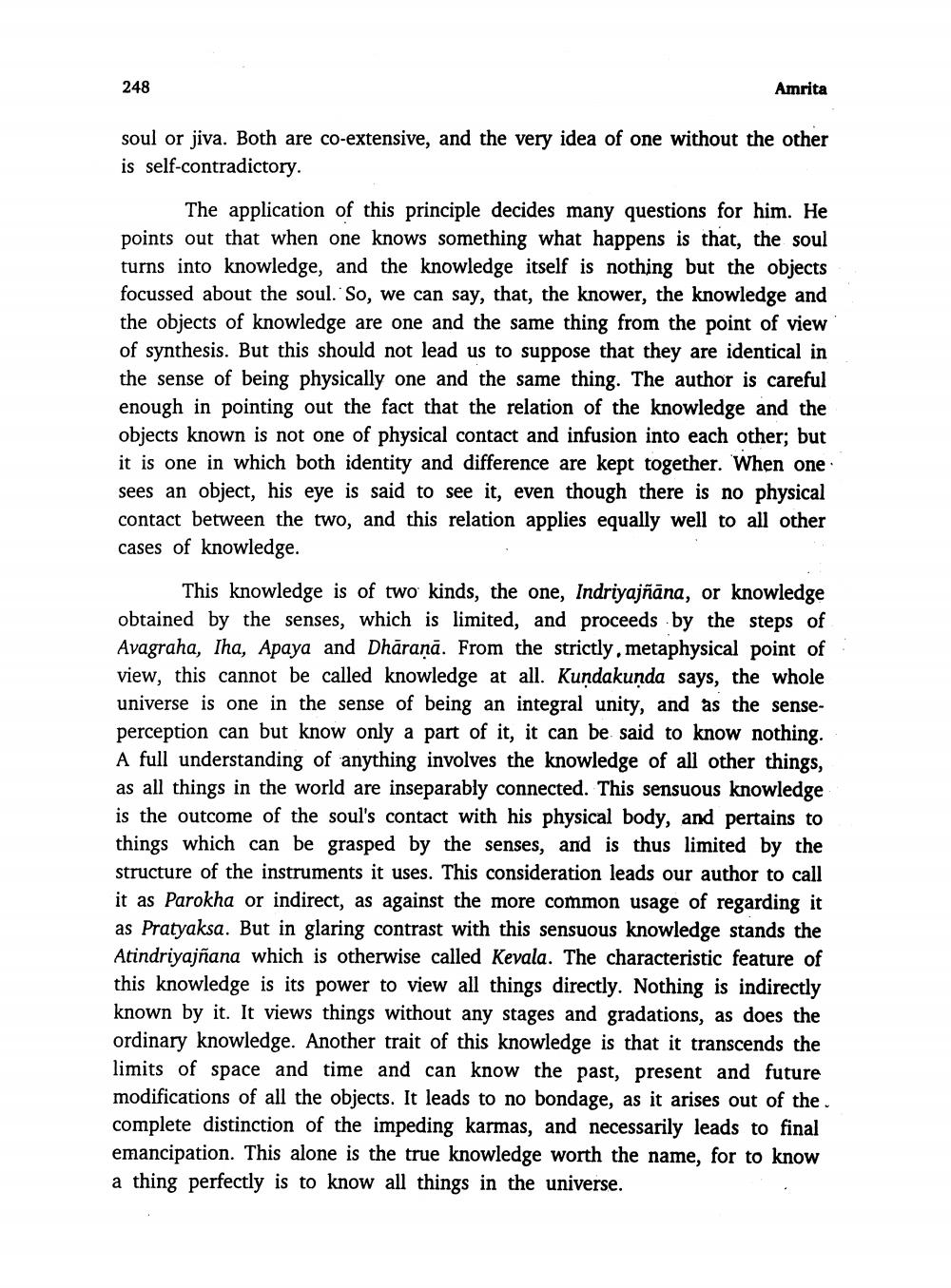________________
248
Amrita
soul or jiva. Both are co-extensive, and the very idea of one without the other is self-contradictory.
The application of this principle decides many questions for him. He points out that when one knows something what happens is that, the soul turns into knowledge, and the knowledge itself is nothing but the objects. focussed about the soul. So, we can say, that, the knower, the knowledge and the objects of knowledge are one and the same thing from the point of view of synthesis. But this should not lead us to suppose that they are identical in the sense of being physically one and the same thing. The author is careful enough in pointing out the fact that the relation of the knowledge and the objects known is not one of physical contact and infusion into each other; but it is one in which both identity and difference are kept together. When one sees an object, his eye is said to see it, even though there is no physical contact between the two, and this relation applies equally well to all other cases of knowledge.
This knowledge is of two kinds, the one, Indriyajñäna, or knowledge obtained by the senses, which is limited, and proceeds by the steps of Avagraha, Iha, Apaya and Dharaṇā. From the strictly, metaphysical point of view, this cannot be called knowledge at all. Kundakunda says, the whole universe is one in the sense of being an integral unity, and as the senseperception can but know only a part of it, it can be said to know nothing. A full understanding of anything involves the knowledge of all other things, as all things in the world are inseparably connected. This sensuous knowledge is the outcome of the soul's contact with his physical body, and pertains to things which can be grasped by the senses, and is thus limited by the structure of the instruments it uses. This consideration leads our author to call it as Parokha or indirect, as against the more common usage of regarding it as Pratyaksa. But in glaring contrast with this sensuous knowledge stands the Atindriyajñana which is otherwise called Kevala. The characteristic feature of this knowledge is its power to view all things directly. Nothing is indirectly known by it. It views things without any stages and gradations, as does the ordinary knowledge. Another trait of this knowledge is that it transcends the limits of space and time and can know the past, present and future modifications of all the objects. It leads to no bondage, as it arises out of the. complete distinction of the impeding karmas, and necessarily leads to final emancipation. This alone is the true knowledge worth the name, for to know a thing perfectly is to know all things in the universe.




